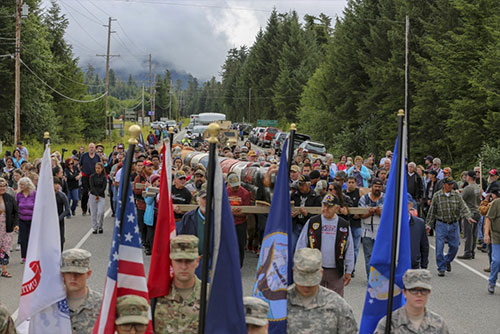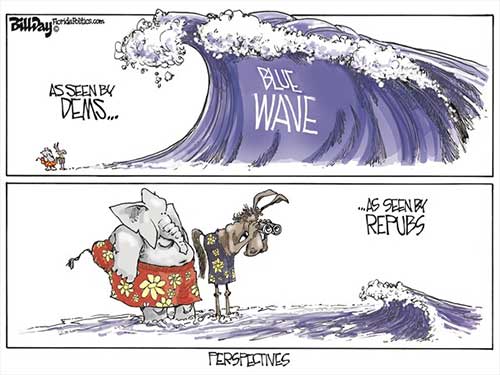


Weekly Specials
Online Shopping; Pickup or Delivery |
|

















 Contact Contact 
 Webmail
Letters Webmail
Letters
 News Tips News Tips
 Copyright Info Copyright Info
 Archives Archives
Quick News
Search
 Alaska Alaska
 Ketchikan Ketchikan
 SE Alaska SE Alaska
Columns
- Articles
 Dave Kiffer Dave Kiffer
 Money Matters Money Matters
Historical
Ketchikan
 June Allen June Allen
 Dave
Kiffer Dave
Kiffer
 Louise
B. Harrington Louise
B. Harrington
Sports
 Ketchikan Links Ketchikan Links
Public Records
 FAA Accident Reports FAA Accident Reports
 NTSB
Accident Reports NTSB
Accident Reports
 Court Calendar Court Calendar
 Recent Filings & Case Dispositions Recent Filings & Case Dispositions
 Court Records Search Court Records Search
 Sex Offender Reg. Sex Offender Reg.
 Public Notices Public Notices
 AST Daily Dispatch AST Daily Dispatch
 KTN
Police Reports KTN
Police Reports
 Juneau Police Reports Juneau Police Reports
Weather,
Webcams
 Today's
Forecast Today's
Forecast
 KTN
Weather Data KTN
Weather Data
 AK
Weather Map AK
Weather Map
 AK Weathercams AK Weathercams
 AK Earthquakes AK Earthquakes

|
|

Thursday
August 30, 2018

|
TOTEM HONORS ALASKA'S VETERANS
Members of the Alaska Organized Militia including the Alaska Air and Army National Guard and Alaska State Defense Force, join veterans, community members and people from across the state and nation to participate in a Veterans Totem Pole raising ceremony in the city of Klawock on Prince of Wales Island, Aug. 18, 2018.
Front Page Feature Photo By STAFF SGT. BALINDA O'NEAL DRESEL ©2018
|
|
Southeast Alaska: New Totem Pole on Prince of Wales Island honors Alaska’s veterans By STAFF SGT. BALINDA O'NEAL DRESEL - The west coast of Prince of Wales Island swelled with veterans, friends and family members who gathered to partake in a three-day celebration culminating with a totem pole raising ceremony here Aug. 18.
Like many of the totem poles that stand reverently on the island symbolizing or commemorating ancestors, cultural beliefs, oral history and clan lineages, this 37-foot totem stands to honor Alaska’s veterans.
“This is how we as Tlingit and Haida people acknowledge an event or person by raising a totem pole in their honor,” said Klawock elder Aaron Isaacs, a former Alaska Army National Guardsman and U.S. Army 82nd Airborne paratrooper, who contemplated and planned for decades about the best way to honor Alaska veterans as monuments were being constructed across the United States. “[This] is what we are doing – honoring all veterans.”
Isaacs, a current member of the Alaska State Defense Force and president of the Prince of Wales Island Veterans Association, worked with a local carver, Jon Rowan, a U.S. Marine Corps veteran, to come up with the totem’s unique design. The totem displays service branches and Prisoners of War-Missing In Action insignias, a 1960s-era U.S. Army Soldier, ancient warrior holding a double-headed dagger and carrying a jade pick, an eagle and raven at the top, and a set of identification tags that veterans can pin unit crests and insignia to in the bottom of the totem pole.
“The eagle and raven are a representation of us watching each other’s back,” explained Rowan, who also pointed out that the totem is meant to symbolize a mortuary pole where remains were historically preserved inside a small wooden box in the totem. “Behind the POW-MIA flag we have a bent wood box. That is for our missing brothers and sisters – a place of honor.”
From a local feast boasting halibut, smoked King salmon, Coho salmon, shrimp, and deer meat to traditional song and dance, members of the Alaska Air and Army National Guard and Alaska State Defense Force joined in the festivities. - More...
Thursday PM - August 30, 2018
Southeast Alaska: Forest Service seeks comment, announces public meetings on Alaska Roadless Rule - The USDA Forest Service is seeking public comments and will host public information meetings as it prepares to develop a durable Alaska Roadless Rule to further Alaska’s economic development and other needs, while also conserving roadless areas for future generations.
Members of the public have until Oct. 15, 2018 to comment on the Notice of Intent to prepare an Environmental Impact Statement. Instructions about how to comment are available online (Click here).
The Forest Service plans to host informational public meetings in Alaska and Washington D.C. in late September and early October.
The first meeting is scheduled to take place in Juneau on Thursday, September 13, 2018. The next scheduled meeting is Monday, September 17, 2018 in Ketchikan and another in Hoonah. The meeting is scheduled to begin in Ketchikan at 5:30 PM - 8:00 PM at the Southeast Alaska Discovery Center located at 50 Main Street. Meetings will also be held in Craig, Angoon, Point Baker/Port Protection, Wrangell, Petersburg, Kake, and Anchorage. The full list of meetings, with dates, times and locations can be accessed online. Click here (PDF)
The State of Alaska, as a cooperating agency, will be hosting separate meetings to engage with the public.
“We are coordinating with the State of Alaska to develop an Alaska Roadless Rule that is responsive to the communities, businesses, and people who rely on the Tongass National Forest,” said Tongass Supervisor Earl Stewart. “By working together, we can ensure that this rule helps provide more economic opportunity for Alaskans while sustaining the health, diversity and productivity of the Tongass National Forest.” - More...
Thursday PM - August 30, 2018 |
|
Ketchikan: 1978 Lab Bay Goose Crash was most deadly on record; After 40 years, still no explanation for crash that killed 12 By DAVE KIFFER - Forty years ago this week, one of the last Grumman Goose amphibians operating commercially in Southeast crashed just off the northern tip of Prince of Wales Island. Twelve people died in the crash, making it one of the worst aviation accidents in the history of Southeast Alaska. At the time, it was the highest loss of life in a Grumman Goose crash.
The Goose had been the dominant mode of air transportation between the communities in Southeast from the end of World War II to the early 1970s, but with most of the larger communities getting jet airports, the regional air taxi industry was transitioning to smaller float planes such as the Cessna 185 and the DeHavilland Beaver to continue operations into the even smaller and more isolated communities.
By 1985, PenAir in southwestern Alaska was the last United States carrier still regularly using Grumman Goose aircraft, although at least one Canadian company, Pacific Coastal was still flying the Goose. PenAir made its last Grumman Goose flight, in the Aleutian Islands, in 2012.
Like nearly all the Grumman Goose "amphibs" that flew in Alaska, the Webber Air plane was built during World War II. After the war, M.L Hardy of Pennsylvania purchased it for $6,800. In 1948, he sold it to Dr. Walter Stafford of Massachusetts. In 1951, the giant contractor Morrison-Knudsen purchased the plane for $32,500.
During the Cold War build up, Morrison-Knudsen had numerous projects in Alaska and the Goose was reported being towed into Nome by the Coast Guard Buoy Tender Clover after an engine failed 40 miles southwest of Nome.
Shortly after that, Vince Daly began an air service in Alaska and purchased the Goose for $37,000. After five years of operating primarily in the Kodiak area, he sold the Goose back to Morrison for $55,000.
Morrison kept the aircraft for three more years and then it passed through several owners before it was purchased by B.C. Airlines. In March of 1965, it suffered an unknown accident that cause it be declared a total loss. But, of course, its flying time was not over. Frequently, "totaled" aircraft in the Northwest eventually find their way back to airworthiness depend on how much owners are willing to spend and replace.
It was sold two more times and finally rebuilt by a company in Seattle. It was ready to go by January 1968 and was purchased by Webber Air in Ketchikan. Webber operated the plane for the next six years and then sent it in for a complete overhaul. In 1977, records show that the aircraft suffered a "hard landing" and needed significant repair, primarily to the engine mounts and cowlings.
That was the last time the plane showed up in government records before the fatal crash of August 25, 1978.
According to Gregory Leifer's 2014 book "Broken Wings: Aviation Disasters in Alaska," Webber Airlines had originally sent a smaller aircraft to Prince of Wales to pick up passengers the morning of August 25, but that it had been unable to traverse the cross island passes because of bad weather. It was decided the plane would try again later in the day.
"Jack Swain, one of the company owners, instead decided to fly the Grumman Goose, since the amphibian could carry both groups of passengers from the morning and afternoon flights and would alleviate the need for a second aircraft," Leifer wrote. "One of the passengers also had a connecting flight in Ketchikan and he (Swaim) felt obligated on getting him there in good time." |
Swaim left Ketchikan at 1 pm, there was a thick overcast in Clarence Strait with occasional rain showers. There was a slight breeze and conditions appeared fine for flight.
At 1:45, the Goose landed at Nichen Cove on Tuxekan Island and then pulled In to the dock at Naukati. Both the morning and afternoon passengers, a total of seven. and their luggage were loaded onto the plain. Two other passengers wanted to fly to Labouchere Bay, a logging camp on the Northwest corner of Prince of Wales, but they were told to wait for a later flight.
"Swaim was already irritated by weather delaying the schedule and became more irritated with the ensuing discussion over the two additional passengers," Leifer wrote. "He was in a hurry."
The plane was certified for 10 passengers, but the extra gear bound for Lab Bay took up the rest of the plane's capacity. The plane left Naukati and flew on to Lab Bay where it arrived at 2:20 pm.
Two of the passengers deplaned at Lab Bay and six more additional passengers joined the flight. There was more disagreement about passengers at Lab Bay.
"A heated discussion then developed between Swaim and a remaining passenger (in Lab Bay) who had been scheduled without his knowledge," Leifer wrote in 2014. "He became more irritated as the conversation continued and would not allow her on the aircraft. The plane already held a total of 11 passengers, one over the maximum limit."
At 2:35 pm, the plane took off from Lab Bay and turned north into Sumner Strait. Swaim contacted Webber in Ketchikan and reported that he planned to stop in Whale Pass and Coffman Cove before returning to Ketchikan.
That was the last that was heard from Webber Airlines Goose. - More....
Thursday PM - August 30, 2018
Alaska: Very Short Public Comment Period Opened for 2016 Pink Salmon Disaster Fund Draft Distribution Plan - On January 18, 2017, Secretary of Commerce Pritzker declared the 2016 Gulf of Alaska pink salmon fishery a disaster under the Magnuson-Stevens Fishery Conservation and Management Act. Following this declaration, Congress appropriated $56.3 million to Alaska to address losses to the seven management areas in the Gulf of Alaska affected by the fishery failure.
The Alaska Department of Fish & Game announced the opening of the public comment period today. The comment period will close on September 07, 2018 at 5:00 PM (AST) allowing for less than an 8 day comment period.
The State of Alaska in consultation with the Alaska Regional Office of NOAA have developed a draft distribution plan for these funds, that upon finalization will be administered by the Pacific States Marine Commission (PSMFC). Upon receipt of the funds, PSMFC will employ the disaster distribution plan to administer the funds to the affected entities. The State of Alaska's intent is to distribute the federal funds to the affected parties as soon as practical.
There are four categories outlined in the draft spending plan: research, municipalities, fishery participants, and processors. The distribution plan describes each category, eligibility criteria, and methods for allocating disaster funds. - More...
Thursday PM - August 30, 2018
|
 |
MICHAEL SHANNON: Democrats Still the Party of Voter Suppression - Democrats and the rest of the left have a somewhat bifurcated approach to the vote. During their Jim Crow regime in the South, Democrats specialized in retail vote suppression. When a potential black voter attempted to register that brave individual was met with literacy tests, poll taxes and other extra-constitutional roadblocks placed by a Democrat government between a minority and the voting booth.
And if that wasn't enough for the black man to take the hint, there was always outright violence as a fallback position.
Today, Democrats have donated their voter suppression identity to an unwilling Republican party. They claim the GOP's tentative, Tinder-like approach to matching names with faces is "vote suppression" and racism.
When Democrats were the suppressors they applied their genuine vote reduction efforts only to the subset of the population that was non-white. Accommodating Democrats often let White folks vote from the cemetery.
Republicans are much more even-handed. Their goal is to apply perfectly reasonable Voter ID efforts to anyone who wants to vote, whether he's white enough to join the Klan or dark enough to be fleeing the Klan. - More...
Thursday PM - August 30, 2018
 |
CARL GOLDEN: How Democrats Could Hurt Their Chances in November - In the face of month upon month of glowing reports of a national economy reaching new milestones, the blue wave - the movement predicted to sweep Democrats back into control of Congress this November - lost its momentum.
Well, it's back, gathering power and strength and once again raising Democratic hopes it will come crashing down on Congress, washing Republicans into retirement and turning the House into a Democratic stronghold.
The economic news hasn't lost its luster and promise - quarterly growth is approaching four percent and predicted to reach higher, job creation remains strong and unemployment has fallen below four percent.
The suddenly resurgent blue wave is building to a crescendo on indictments, guilty pleas and convictions of individuals associated politically, professionally or personally with President Trump.
The conviction of former Trump campaign manager Paul Manafort on tax and bank fraud charges and the guilty plea entered by former Trump attorney Michael Cohen to tax, banking and campaign finance charges dealt the president a serious blow. It also re-energized Democrats seeking victory in Congressional districts by tying their Republican opponents to a corrupt Administration. - More...
Thursday PM - August 30, 2018
|

Political Cartoon: Perspectives
By Bill Day ©2018, Tallahassee, FL
Distributed to paid subscribers for publication by Cagle Cartoons, Inc.
Rising Above Partisanship By
Rep. Dan Ortiz - Government should represent “We, the people” - not the party leaders, or those who can buy access to power. I believe good governance is about rising above partisanship, which can sometimes get petty, and putting the people first. In order to do that effectively, elected officials need to provide many avenues for people to communicate with them. Door to door communication from one end of our island(s) to the other, letters to the editor, town halls, social media, and email communication are specific examples of the ways that I have done that.
What I have heard from constituents throughout District 36 in those communications is that they want government to reduce its spending, but also maintain vital services. People want their roads paved, particularly Evergreen road in Wrangell, and South Tongass Hwy in Ketchikan. They want Fish and Game to continue to manage our fisheries resources effectively, and they want our growing senior citizen population to be able be able to access government resources in housing and economic assistance so that they can live their lives with dignity here in Southern S.E. Alaska.
Since the beginning of my service, the State’s fiscal situation has been the primary issue that has faced the legislature. Working in cooperation with the leadership of the Walker Administration, the Legislature has reduced the budget deficit by reducing general fund expenditures by 44% – from $8.3 billion in FY 2013 to $4.3 billion in FY 2017. Twenty-six percent of the reductions were in day to day agency operations. The reductions have come at a cost, resulting in significant cuts to the Ak State Fish and Game, DOT, (our roads and the AMHS,) and Senior programs like Pioneer Home Funding. - More...
Friday PM - August 24, 2018
 |
Salmon For All: Hatcheries Support Strong Science and Abundance for Alaskans By
Clay Koplin - Few things define Alaskans more than our love of salmon. Not surprisingly, salmon allocation decisions and fluctuations in resource abundance often spur bitter political battles between user groups. A robust public process rooted in best available science has long been the arbiter of such disputes. As an Alaskan born and raised on the Kenai, and in my current role as Mayor of Cordova, it is with deep consternation that I followed a recent Board of Fisheries evaluation of an emergency petition seeking to restrict hatchery salmon releases in Prince William Sound. The Board narrowly voted to reject the petition averting a dangerous departure from best available science, transparency, and public process; the principles that are the bedrock of our management system.
A broader snapshot of recent and historical abundance reveals many positive trends in our fisheries. It was just a few years ago that Kenai-area dipnetters harvested more than half a million sockeye two seasons in a row. Across Alaska, harvest and abundance of wild Pacific salmon have remained steady for the past twenty years and are markedly higher than pre-hatchery levels. In fact, three of the four largest record-breaking wild salmon harvests occurred in the last five years (2013, 2015, and 2017). Average abundance of wild Cook Inlet sockeye over the past twenty years is more than double than in 1952-1972, and abundance of wild Prince William Sound sockeye has also increased over that same period. If you look at the data, the numbers tell the story.
It is important to recognize the resounding success of the hatchery management program. Salmon hatcheries have been a key component of our state’s commercial, recreational, and subsistence fisheries since the 1970s. Alaska’s hatchery program provides immense economic and social benefit to the entire state, particularly coastal communities like Cordova. The enhanced commercial harvest leads to the creation of processing jobs, fisheries tax revenue, economic investment, and state general fund revenues. An often-overlooked fact is that hatcheries create significant sport fishing opportunities in Prince William Sound and statewide, which increases the summer tourism industry. These benefits are essential to our coastal communities as well as the state, particularly in times of decreasing state budget resources. - More...
Friday PM - August 24, 2018
 |
Open Letter: CPV Proposal for $199,000 toward restoration of two totems By
Mary L. Stephenson - Thank you for permitting an open discussion about the CPV Community Profile, Needs, Priorities and Expenditures, in this example, with the City of Saxman, as they own and manage the Saxman Totem Park; caretakers of a collection of (30) Tlingit carvings from abandoned villages and cemeteries of Tongass, Cat, Village and Pennock Islands as well as Cape Fox Village.
With the exception of the Dogfish Pole, aka Chief Ebbits Pole, all the totems have been replaced since the 1930s and admittedly, the City of Saxman is attempting to replicate for the second time many of those who life’s expectancy exceeds 70 years. (Page 3 CPV Proposal) Master Carver Nathan Jackson as well as the City’s Totem Committee has identified 5 major totems that need immediate attention. Is it a birthright of future generations that totems carved, replicated, restored or installed in the Saxman collection will be at someone else’s expense? When a new story pole has been commissioned, who pays for the carving, restoration or replication during its 80-year lifespan? Is it the responsibility of the caretaker, receiving revenues during its promotion of, obligated to finance the repair or replacement what Mother Nature damaged during its lifetime? Does funding a restoration take higher priority than social, education or mental health programs?
(Page 6 CPV Proposal) Chief Ebbits : Ebbetts Pole lineage comes down through Chief Ebbits, the Head Chief of the Tongass Tribe and a monument that tells an important peaceful story of early Tlingit contact with white traders. Giant Rock Oyster Pole was brought to Saxman from Cape Fox Village and stood in front of the Eagle Claw House; illustrates four emblems related to house groups of the Nexadi clan, descendants of Eagle Claw House. Thus the descendants of the Tongass Tribe and Cape Fox Tribe revere the importance in preservation, yet critical toward non-natives involvement all-the-while (privately) profit in their own entrepreneur endeavors. - More...
Friday PM - August 24, 2018
Pretender President By
Donald Moskowitz - I commend Trump for implementing a $717 billion Defense budget, but I am concerned he has to backtrack on major issues.
At the G7 talks Trump agreed to the dissemination of a joint statement at the conclusion of the talks. After leaving the meeting, and away from the other attendees, he rescinded his support of the statement.
Trump imposed tariffs on imports from China, the European Union, Canada and Mexico without analyzing the consequences. He had to walk back the Canada and Mexico tariffs and is trying to reach an agreement with the European Union. China retaliated by imposing tariffs on our agricultural exports so Trump has to bail out U.S. farmers with $12 billion of U.S. taxpayer funds, and China is developing European Union and other sources for importing agricultural products U.S. farmers previously provided. - More...
Friday PM - August 24, 2018
 Webmail your letter or Webmail your letter or
 Email Your Letter To: editor@sitnews.us Email Your Letter To: editor@sitnews.us
|
Articles &
photographs that appear in SitNews may be protected by copyright
and may not be reprinted or redistributed without written permission
from and payment of required fees to the proper sources.
E-mail your news &
photos to editor@sitnews.us
Photographers choosing to submit photographs for publication to SitNews are in doing so, granting their permission for publication and for archiving. SitNews does not sell photographs. All requests for purchasing a photograph will be emailed to the photographer.
|
|


















The Local Paper is
available online.
Click here for this week's printed edition (PDF)

|
|

![]() Contact
Contact ![]()
![]() Webmail
Letters
Webmail
Letters![]()
![]() News Tips
News Tips![]()
![]() Copyright Info
Copyright Info![]() Archives
Archives![]() Alaska
Alaska![]() Ketchikan
Ketchikan![]() SE Alaska
SE Alaska![]() Dave Kiffer
Dave Kiffer![]() Money Matters
Money Matters ![]() June Allen
June Allen![]() Dave
Kiffer
Dave
Kiffer![]() Louise
B. Harrington
Louise
B. Harrington ![]() Ketchikan Links
Ketchikan Links![]() FAA Accident Reports
FAA Accident Reports ![]() NTSB
Accident Reports
NTSB
Accident Reports![]() Court Calendar
Court Calendar![]() Recent Filings & Case Dispositions
Recent Filings & Case Dispositions ![]() Court Records Search
Court Records Search![]() Sex Offender Reg.
Sex Offender Reg.![]() Public Notices
Public Notices![]() AST Daily Dispatch
AST Daily Dispatch![]() KTN
Police Reports
KTN
Police Reports![]() Juneau Police Reports
Juneau Police Reports ![]() Today's
Forecast
Today's
Forecast![]() KTN
Weather Data
KTN
Weather Data![]() AK
Weather Map
AK
Weather Map![]() AK Weathercams
AK Weathercams![]() AK Earthquakes
AK Earthquakes








































